new posts in all blogs
Viewing: Blog Posts Tagged with: 1949, Most Recent at Top [Help]
Results 1 - 6 of 6
How to use this Page
You are viewing the most recent posts tagged with the words: 1949 in the JacketFlap blog reader. What is a tag? Think of a tag as a keyword or category label. Tags can both help you find posts on JacketFlap.com as well as provide an easy way for you to "remember" and classify posts for later recall. Try adding a tag yourself by clicking "Add a tag" below a post's header. Scroll down through the list of Recent Posts in the left column and click on a post title that sounds interesting. You can view all posts from a specific blog by clicking the Blog name in the right column, or you can click a 'More Posts from this Blog' link in any individual post.
Bartholomew and the Oobleck. Dr. Seuss. 1949. Random House. 56 pages. [Source: Library]
First sentence:
They still talk about it in the Kingdom of Didd as The-Year-the-King-Got-Angry-with-the-Sky. And they still talk about the page boy, Bartholomew Cubbins. If it hadn't been for Bartholomew Cubbins, that King and that Sky would have wrecked that little Kingdom.
Premise/Plot: The King is in a grumbling-complaining mood. He's angry at the sky for only sending down rain, snow, fog and sunshine. He sends for his magicians commanding them to make the sky produce something new. The magicians, well, they mumble a few words and promise to deliver something called 'oobleck.' Only Bartholomew is wise enough to predict that this means TROUBLE, big, big trouble. He is diligent in warning people to beware and be careful. But his words, well, aren't taken all that seriously. Or. In some cases, his words come just a little too late. The king has brought down trouble on his kingdom. How can the kingdom be saved?! Are there MAGIC WORDS the king can say to make the oobleck go away?!
My thoughts: I'd never read Bartholomew and the Oobleck before. I really liked it. I think I liked it even better than The 500 Hats of Bartholomew Cubbins. The King is just as silly and ridiculous. And the situation is even more out of control. I like that the 'magic words' that save the kingdom are "I'm sorry" and "It's all my fault."
Have you read Bartholomew and the Oobleck? Did you like it? Did you love it? Did you hate it? How do you think it compares to The 500 Hats of Bartholomew Cubbins? I'd love to hear what you thought of it!
If you'd like to join me in reading or rereading Dr. Seuss' picture books (chronologically) I'd love to have you join me! The next book I'll be reviewing is If I Ran the Zoo.
© 2015 Becky Laney of
Becky's Book Reviews

By:
Becky Laney,
on 7/6/2014
Blog:
Becky's Book Reviews
(
Login to Add to MyJacketFlap)
JacketFlap tags:
classics,
picture books,
cats,
J Fiction,
early readers,
2005,
1969,
1973,
children's classic,
1949,
1947,
1954,
1960,
1957,
1972,
books reviewed in 2014,
Add a tag
The School for Cats. Esther Averill. 1947/2005. New York Review Children's Collection. 32 pages. [Source: Library] The School for Cats was originally published in 1947. It is part of a larger series of books starring the (black) cat Jenny Linsky and her friends. The School of Cats is not the first in the series, but, it is the first in the series that my library actually had. In this "Jenny's Cat Club" book, readers meet Jenny as she leaves her home in Greenwich Village to attend school in the country. She is very, very, very unsure about the whole school thing. But her master, Captain Tinker, wants her "to study cat lore in the country." There is definitely something of an adventure in this one when Jenny runs away from school. But it also contains a lesson on friendship and adapting to new situations.
I enjoyed this one. I look forward to reading others in the series.
Jenny's Moonlight Adventure. Esther Averill. 1949/2005. New York Review Children's Collection. 32 pages. [Source: Library]Jenny's Moonlight Adventure was originally published in 1949. It is part of a larger series of books starring Jenny and her friends. I did not like this book as well as The School for Cats. It is a Halloween adventure. Jenny must prove how brave she is both for herself and for her friends. She reluctantly accepts a job that only she can do. She is to carry a nose flute to a sick friend (another cat, of course). The job is "dangerous" because it requires her to be brave and clever enough to get past several unfriendly neighborhood dogs.
For readers who celebrate Halloween, this one might prove charming.
Jenny Goes to Sea. Esther Averill. 1957/2005. New York Review Children's Collection. 140 pages. [Source: Library]Of the Jenny Linsky books I've read so far, Jenny Goes to Sea is probably my favorite. In this chapter book originally published in 1957, Jenny Linsky and her two brothers, Edward and Checkers, travel the world with their owner, Captain Tinker. These three cats become very good friends with Jack Tar, the ship's cat. These three leave the ship in company with Jack Tar at many of the ports including Capetown, Zanzibar, Singapore, and Bangkok. Adventures come oh-so-naturally.
I definitely recommend this series to cat lovers of all ages.
Jenny and the Cat Club: A Collection of Favorite Stories About Jenny Linsky. Esther Averill. 1973/2003. New York Review Children's Collection. 176 pages. [Source: Library]Jenny and the Cat Club features five stories by Esther Averill. These were originally published in 1944, 1948, 1951, 1952, and 1953. The stories are: "The Cat Club," "Jenny's First Party," "When Jenny Lost Her Scarf," "Jenny's Adopted Brothers," and "How the Brothers Joined the Cat Club."
The Cat Club introduces readers to Jenny Linsky, a "shy little black cat" from New York City. Readers meet Jenny and her owner Captain Tinker. In this adventure, Jenny receives her signature red scarf, a present from her owner who happens to knit. This red scarf helps Jenny gain enough confidence to talk to other cats in the neighborhood. In this one, readers learn about the neighborhood cat club, they are briefly introduced to the other cats, and they learn that members of the cat club must be special.
Jenny's First Party is a story focusing on Jenny and her friend Pickles (the fire cat) teaming up and strolling the neighborhood. Both are looking for fun, fun, fun. But neither have money. (What cat has money?!) They stumble upon a groovy party and a great time is had by all. Readers learn that Jenny can dance a happy little sailor's hornpipe dance.
"When Jenny Loses Her Scarf" is about when Jenny's beloved red scarf was stolen by a dog. The dog, Rob the Robber, refuses to give it back. Jenny seeks help from Pickles the fire cat. Pickles is just the one to help her, it turns out, for justice is dealt out after all. The dog's hangout catches on fire! Pickles retrieves the scarf as he's putting out the fire.
"Jenny's Adopted Brothers" is about when Jenny meets two stray cats: Checkers and Edward. Checkers, readers learn, retrieves things. Edward, we learn, is a poet. Jenny meets these two, feels sorry for them, and introduces them to Captain Tinker. When these two are adopted by the Captain, Jenny feels very jealous! Will having two other cats in the house prove too much?!
"How The Brothers Joined the Cat Club" is obviously about when Edward and Checkers join the club. Jenny is hesitant to include her two new brothers at first. After all, she likes the idea that the club could remain her own little secret and her way to get away from them. But. Being the good little cat that she is, Jenny soon realizes that she could never really keep her brothers from missing out on the awesomeness of the cat club. She helps them discover their talents and introduces them to all her friends.
I liked this one. I did. I like meeting Jenny and the other cats.
The Hotel Cat. Esther Averill. 1969/2005. New York Review Children's Collection. 180 pages. [Source: Library]The Hotel Cat is an enjoyable children's novel by Esther Averill. It was originally published in 1969.
The Hotel Cat stars a cat named Tom. He lives at the Royal Hotel, an eight-story building in New York. It is on the older side. And the hotel isn't doing the best business. But all that happens to change during the novel. Tom who is used to having the place to himself, for the most part, at least in terms of CATS ON THE PLACE discovers that there are cats there with their owners. The first few cats he meets he is rude, very rude. But after Tom's owner, Mrs. Wilkins, talks to him, he decides to be more gracious and welcoming. It isn't long before he meets three cats: Jenny, Edward, and Checkers. And those aren't the only cats from the cat club he happens to meet. A difficult winter has resulted in a lot of broken boilers and frustrated cat-owning homeowners are staying at the Royal Hotel. How convenient!
Tom learns a lot about making and keeping friends in The Hotel Cat.
I liked this one.
Captains of the City Streets. Esther Averill. 1972/2005. New York Review Children's Collection. 164 pages. [Source: Library] Captains of the City Streets is a children's novel by Esther Averill originally published in 1972. Two cats star in Captains of the City Street. In this one, the author provides the back story for two cats who have been a part of essentially the whole series. Sinbad and The Duke. These two stray cats are best buddies. They haven't been "owned" by a human in what seems like a very long time by cat reckoning. They are street cats, traveling cats, going from city to city to city, seeing all there is to see, always seeking handouts, but never becoming dependent on any one human. The two travel to "old New York." They are looking for a place of their own, a safe place to stay. They find it. They also find one old man who dependably gives them food day after day on their own terms. He comes and goes leaving the food, never trying to approach the cats, never pushing a relationship. The two cats slowly but surely decide that maybe just maybe humans aren't all that bad. That is when they stumble upon the Cat Club. They learn that the kind human is Captain Tinker. The first cat they befriend is Macaroni. The two are invited to join the Cat Club, but, are hesitant. Do they want to stick around that long? Do they want the responsibility?
I liked meeting Sinbad and Duke. The stories that focus on Jenny certainly mention these two quite a bit, but, this is the first time that readers really learn about these two in detail. It is a fun book.
Jenny's Birthday Book. Esther Averill. 1954/2005. New York Review Children's Collection. 44 pages. [Source: Library] Jenny's Birthday Book by Esther Averill was originally published in 1954. In this cat club book, Jenny Linsky, our star cat, our shy little black cat with the red scarf, has a special birthday with all of her friends whom we've met through the series. Pickles. Sinbad and The Duke. Florio. To name just a few. It is a lovely birthday. The book itself is sweet, simple, and charming. Especially if you like cats and vintage picture books. I think my favorite illustration is of all the cats dancing the Sailor's Hornpipe in the park.
The Fire Cat. Esther Averill. 1960/1983. HarperCollins. 64 pages. [Source: Own] I enjoyed revisiting The Fire Cat by Esther Averill. I read this one many times as a child. But I had no idea it was part of a larger series of books, the Cat Club series by Esther Averill. The Fire Cat does not star Jenny Linsky. It stars Pickles. Pickles has been a delightful character in almost all of the other books in the series. He is probably one of Jenny's best best friends. In the Fire Cat, readers learn more about Pickles. Was he always a fire cat? Of course not! There was a time he was a hopeless cat that was a little bit bad and a little bit good. One of the firemen takes an interest in him and takes him to the fire station. He is hoping that the chief will allow Pickles to stay. Pickles most definitely wants to stay. He wants to prove himself worthy, so he decides to learn by example. He learns to slide down the pole, for example, he learns how to work a hose. The fire chief is definitely charmed, I imagine cat-loving readers are just as charmed. I certainly was! The Fire Cat is a feel-good read. Readers see Pickles transform from a slightly-naughty homeless cat to a brave and dutiful fire cat. He learns responsibility and compassion. Overall, it's just a good story.
© 2014 Becky Laney of
Becky's Book Reviews
Brat Farrar. Josephine Tey. 1949/1997. 288 pages. [Source: Bought]
I definitely enjoyed reading Brat Farrar. Was it my favorite-favorite Tey novel? Probably not. But I enjoyed it so much more than Miss Pym Disposes and A Shilling for Candles.
In Brat Farrar, the reader is in on the secret. Brat Farrar is impersonating Patrick Ashby. Alec Loding "discovers" Brat Farrar's resemblance to the Ashby family. There were twin brothers Patrick and Simon. Patrick vanished when he was twelve or thirteen, and he was presumed dead. The note he conveniently left behind led everyone to believe it was suicide. Even though Patrick didn't seem the sort. Then again, Patrick would not have been the sort to run away for eight years either. Alec Loding is encouraging his new friend, Brat, to invent such a tale. BE Patrick. Inherit the family estate. He tempts him with horses. If there is one thing our hero can't resist, it's horses. His oh-so-special way with horses gives his life meaning. On the one hand, Brat is essentially a moral guy. He knows right from wrong. He is not the sort to be reckless and cruel for the fun of it. On the other hand, ALL THOSE HORSES. So he allows Loding to coach him, teach him, anything and everything he needs to know to BE PATRICK. (How does Alec know all these details? Sure, a family friend might know some stuff, but everything from the age of three or four on up?! Everything???)
So Patrick Ashby returns from the dead. He takes his place with his family. Everything seems to be off to a good start, but, Brat can't help wondering WHY Simon is so SMUG. Like Brat, readers pick up some clues...not firm, exact clues perhaps...but strong feelings that Simon is, well, the more evil twin.
I liked this one. It was a very quick read.
© 2014 Becky Laney of
Becky's Book Reviews
The Story of the Trapp Family Singers. Maria Augusta Trapp. 1949/2001. HarperCollins. 320 pages.
Somebody tapped me on the shoulder. I looked up from the workbooks of my fifth graders, which I was just correcting, into the lined, old face of a little lay sister, every wrinkle radiating kindness. "Reverend Mother Abbess expects you in her private parlor," she whispered. Before I could close my mouth, which had opened in astonishment, the door shut behind the small figure. Lay sisters were not supposed to converse with candidates for the novitiate.This is the true story that "inspired" my favorite musical The Sound of Music. For the most part, the book is fascinating--especially the first half of the book. Readers meet the young woman sent to be governess to a retired sea captain with many children. In the book, she's to be governess only to one of his daughters, the rest either have nursemaids, attend schools, or have their own tutors. There are definitely some big differences between the book and the movie--between truth and fiction. (For example, the names of the children are different, as is the chronology of the story. The couple married years before Hitler came to power; they married in 1927!) They began singing together as a family out of love for music, yes, but also out of financial necessity.
The book chronicles:
Maria's first eight or nine months as a governess, particular attention is paid to their first Christmas
Maria's new role as wife and mother
Austria's changing economy and politics in the 1930s
The family's flight from Austria and immigration to the United States
The family's first experiences in America as they go on tour and learn English
The family's (forced) return to Europe--fortunately, only for a few months.
The family's return to the United States, their continuing tours
The family's settling down in America (a bit more about their tours, building of their house, building of their music camp)
The private life of the family (recollections of holidays, feast days, birthdays, Christmases, vacations, etc.)
The book is great on capturing the family's dependence on God, their reliance on God to deliver them and provide for them no matter the circumstance. The book is also great at capturing a specific time, place, and culture. For anyone curious about what it was like to be living in Austria in the 1920s and 1930s, this is a must read. For those interested in the immigrant experience during this time period, it is just a fascinating account! To see American culture--and language--from this outside perspective. The book was published in 1949, but it was up to date--so readers do get perspective on World War II from their perspective, also what the family tried to do to help Austria after the war was over.
I really LOVED this one!!!
Favorite quotes:
One of the greatest things in human life is the ability to make plans. Even if they never come true--the joy of anticipation is irrevocably yours. That way one can live many more than just one life. (214)
One night I tenderly consulted by private calendar, "time eaters" we had called them at school, and it showed only thirteen more days in exile. The next morning I started spring cleaning. Under my direction the maids were taking down the curtains and proceeding to brush the walls, when I saw the three youngest children knock on the door of the study. It didn't take long and out they came again. Running over to me as I stood on a ladder washing a big crystal chandelier, they yelled from afar: "Father says he doesn't know whether you like him at all!" "Why, of course, I like him," I answered, somewhat absentmindedly, because I had never washed a chandelier before. I noticed only vaguely that the children disappeared behind the study door again. That same night I was arranging flowers in several big, beautiful oriental vases. This was the last touch, and then the spring cleaning was over, and it had been really successful. When I had arrived at the last vase, the Captain came in. Stepping over to me, he stood and silently watched what I was doing with the peonies. Suddenly he said, "That was really awfully nice of you." An altogether new tone in his voice, like the deep, rich quality of a low bell, made me look up, and I met his eyes, looking at me with such warmth that I lowered mine immediately again, bewildered. Automatically I asked what was so nice of me, as I only remembered that awful letter. "Why," he said, astonished, "didn't you send word to me through the children that you accepted the offer, I mean, that you want to marry me?" Scissors and peonies fell to the floor. "That I want to--marry you?" "Well, yes. The children came to me this morning and said they had had a council among themselves, and the only way to keep you with us would be that I marry you. I said to them that I would love to, but I didn't think you liked me. They ran over to you and came back in a flash, crying that you had said, 'yes I do.' Aren't we engaged now?" Now I was out of gear. I absolutely did not know what to say or what to do; not at all. The air was full of an expectant silence, and all I knew was that in a few days I would be received into my convent, and there stood a real, live man who wanted to marry me. (57-58)
Read The Story of the Trapp Family Singers
- If you enjoy biography and memoirs
- If you love The Sound of Music
- If you want to learn more about Austria/Europe in the 1920s, 1930s
© 2012 Becky Laney of
Becky's Book Reviews
The Door in the Wall. Marguerite de Angeli. 1949/1990. Random House. 128 pages.
Robin drew the coverlet close about his head and turned his face to the wall. He covered his ears and shut his eyes, for the sound of the bells was deafening. All the bells of London were ringing the hour of Nones. St. Mary le Bow was nearest, St. Swithin's was close by, and not far away stood great St. Paul's. There were half-a-dozen others within soun, each clamoring to be heard. It seemed to Robin as if they were all inside his head screaming to be let out. Tears of vexation started to his eyes, but he held them back, for he remembered that a brave and "gentil" knight does not cry.This is my first time reading this Newbery winner. It's not a title I would have been drawn to as a kid, much like
Adam of the Road, but I am glad I read it as an adult.
Robin, our hero, is all alone. His father is fighting in a war; his mother called to serve the queen. He was supposed to become a page and begin his training to be a knight, but, an illness left him weak, unable to stand or walk. A compassionate monk, Brother Luke, saves him from an uncertain (at best) fate--for his caretaker, his nurse, falls ill with the plague. Robin begins to heal and begins to learn. He learns to read and write. He is strengthened by swimming. And then there's the whittling. (Exciting stuff.) The book chronicles his journey through these dark and sometimes dangerous times. Readers get a glimpse of the Middle Ages.
The Door in the Wall is a pleasant enough read. While I didn't find it the most thrilling book ever, not even the most thrilling book ever set during the Middle Ages, I didn't find it painful either. There are worse ways to spend an afternoon.
You might also be interested in:
Adam of the Road,
Crispin: The Cross of Lead,
Crispin: At The Edge of the World,
Crispin: The End of Time. Not to mention
Good Masters! Sweet Ladies! Voices from a Medieval Village by Laura Amy Schiltz.
© 2011 Becky Laney of
Becky's Book Reviews

Bonavia-Hunt, D.A. 1949/2008. Pemberley Shades: Pride and Prejudice Continues: A Lightly Gothic Tale of Mr. and Mrs. Darcy. Sourcebooks. 376 pages.
"When old Dr. Robinson, who had been Rector of Pemberley in Derbyshire for over fifty years, died one night in his sleep at the age of eighty-seven, a long life of little eventfulness and placid prosperity came to a not untimely end....Who could have foretold that Dr. Robinson, who had done nothing of note in all his lifetime should, by the common and natural act of dying, set in motion a train of events so strange, so startling, so far removed from probability, as to emulate the rioutous fancies of a disordered mind?" (1, 2)
You can read the first chapter
online here. What can I say about this one? Me, the skeptic who remains ever-doubtful that the perfect sequel exists? I loved this one! I did! Last week, I talked about what I expected out of an Austen sequel..."I don't expect the writer to be Jane Austen. I don't expect her to try to channel Austen when she's writing. I don't expect her to match Austen's literary style or her wit. Just a teeny tiny smidgen of it is good. If she can capture just a small trace of the charm or humor (or both) then that's enough. What makes Austen likeable? Is it her focus on love and romance? Is it her focus on women's lives? Is it her focus on society? Is it her focus on class? Is it her focus on these often comical eccentrics? (Like Mr. Collins or Mrs. Jennings or Mrs. Bennet) Is it the fact that she was good at taking snapshots of her world? Of describing life as it was? Is it the fact that she develops so many characters all at once? Her books are never the story of one man and one woman falling in love. They are always so much more than that. There will never be a sequel that can capture anything and everything Austen was...as a writer. But I think the best of the lot will try to be multidimensional. Maybe not as widely as Austen herself was. But more than just one-dimensional."
This one delivers and then some. We've got a nice balance of Austen characters--Elizabeth, Darcy, Georgiana, Kitty, Lady Catherine, Anne, etc.--with new characters: Mr. Mortimer, Miss Robinson, Miss Sophia, Major Wakeford, Stephen Acworth, etc. This blending is so natural, so seamless that it just
works. The story is simple: a new rector must be found to fill the parish/living. Mr. Darcy is looking for candidates--good candidates--to interview. The only thing he knows for certain--and Elizabeth agrees--is that it cannot, must not be filled by Mr. Collins! (He does apply for the job!) Temporarily, Mr. Mortimer is filling in as substitute preacher. But while Mr. Darcy feels he is good enough for that, the idea of him becoming the new rector is unlikely. But who will he find? One candidate after another fails to meet Mr. Darcy's standards. But then an old friend contacts him. This old friend has a brother, a younger brother, a young widower. A scholarly man who would be "perfect" for the job. A Mr. Stephen Acworth. Darcy sets off to interview him. And happens to come back with not one but two house guests: Stephen Acworth and Major Wakeford, a soldier who had at one time been quite chummy with him. But though this probation period--of six weeks--has been set in place, been promised, something about Stephen Acworth bothers Darcy. Is this his old sense of prejudice resurfacing? Or is Darcy onto something?
The story is of course more complex than that. It is filled with characters--all well-developed, all flawed, all human, some quite comical or eccentric--all have their own story to tell. There are visits, walks, parties, balls, declarations of love both proper and improper, and much much more. I don't want to say much more, but I don't want to say too little either. I highly recommend this one to skeptics everywhere. Who will like this book best? Those that love Jane Austen and who typically find modern sequels to be sickening. Who find that modern writers just don't get what Elizabeth and Darcy are about. Who will
not like this book? If you're all about contemporary sequels that offer sex, sex, sex, and more sex...then this one will disappoint.
One other note: THIS IS NOT A GOTHIC BOOK. Despite the fact that it says "lightly" gothic. The point of the book is that it is an entertaining, sometimes comical, lightly romantic, moderately mysterious sequel.
Other reviews:
Austenprose,
Austenblog (who didn't like it at all),
Curled Up,
© Becky Laney of
Becky's Book ReviewsIf you're reading this post on another site, or another feed, the content has been stolen.




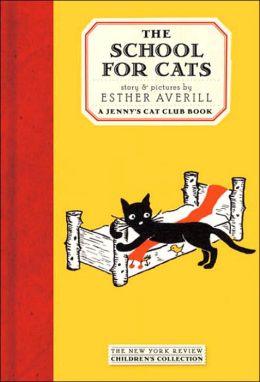
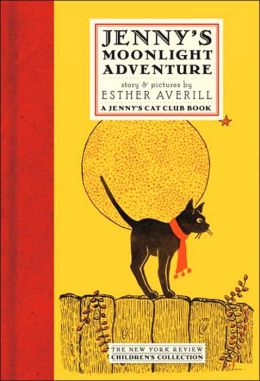

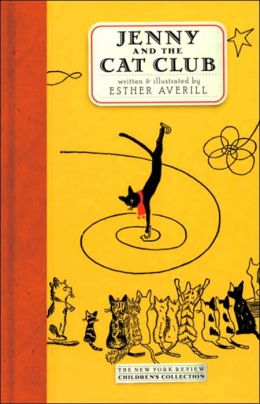
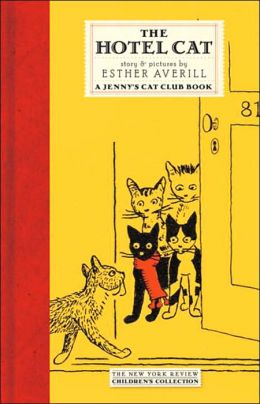

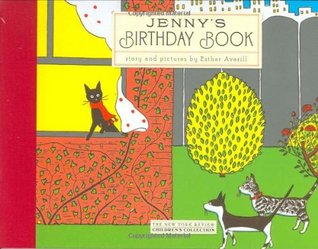





The Sound of Music was my favorite movie growing up, and it's still one of my favorites. It's about time I learned more about the family behind the musical!
I have never even heard of this book before. Definitely something for me to check out!